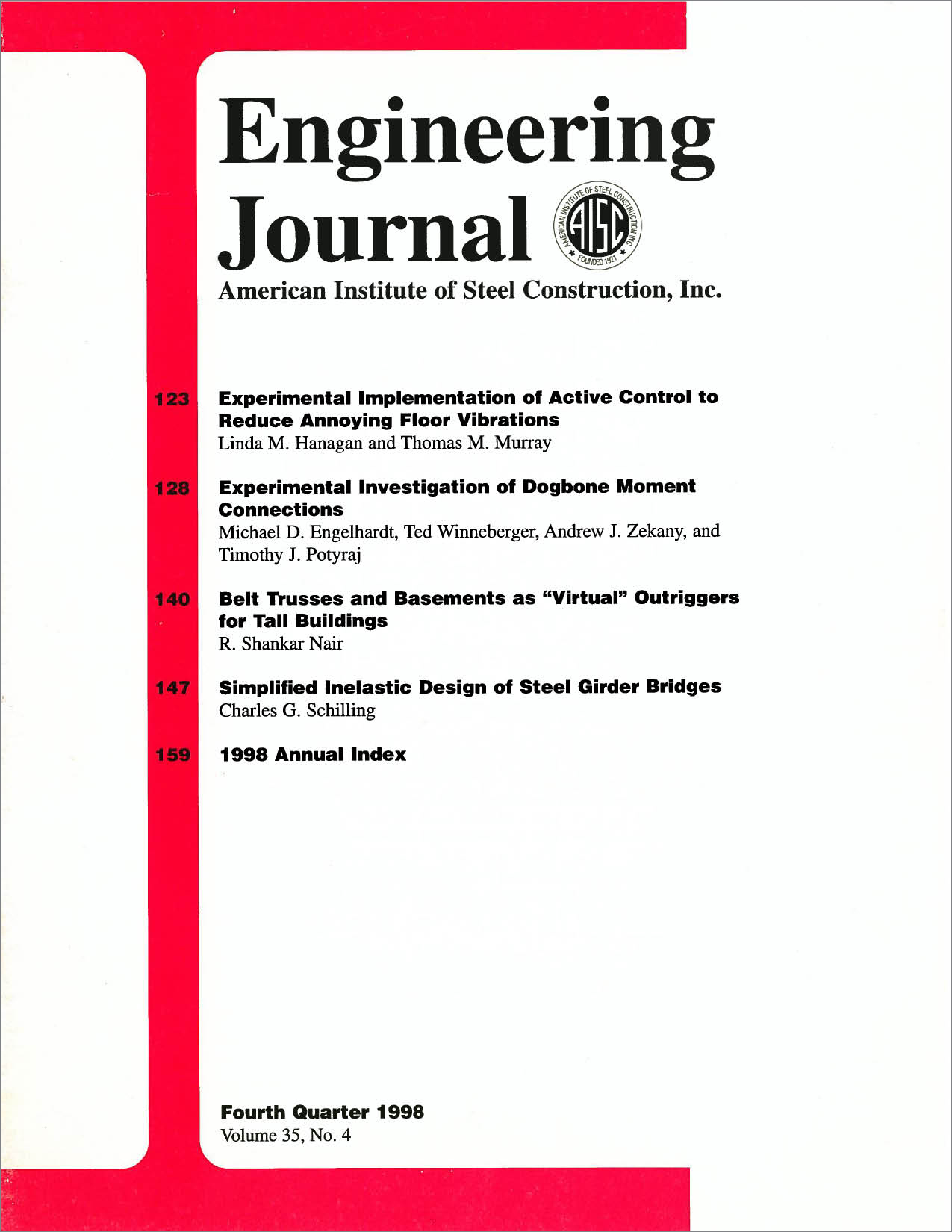Experimental Investigation of Dogbone Moment Connections
DOI:
https://doi.org/10.62913/engj.v35i4.711Abstract
A test program was conducted on seismic-resistant steel moment connections constructed using a Reduced Beam Section, also known as a "dogbone." In the dogbone connection, portions of the beam flange near the beam-to-column connection are trimmed in order to enhance ductility under severe cyclic loads. This test program was conducted in order to evaluate the dogbone connection for use in a 25 story steel office building in Salt Lake City. A total of five large scale specimens were tested in this program, with beam sizes ranging from W30X148 up to W36X194. The specimens combined the dogbone cutout in the beam flanges with an all welded beam-to-column connection constructed using improved welding practices. The test program showed excellent performance for specimens constructed with a circular radius cut dogbone. Cost comparisons indicated that this connection also provided good economy compared to other alternatives considered for this building construction project. Overall, the dogbone appears to be one of the more promising moment connection details for use in seismic-resistant steel moment frames. This paper summarizes the results of the experimental program, and provides suggestions for the design of dogbone moment connections.

